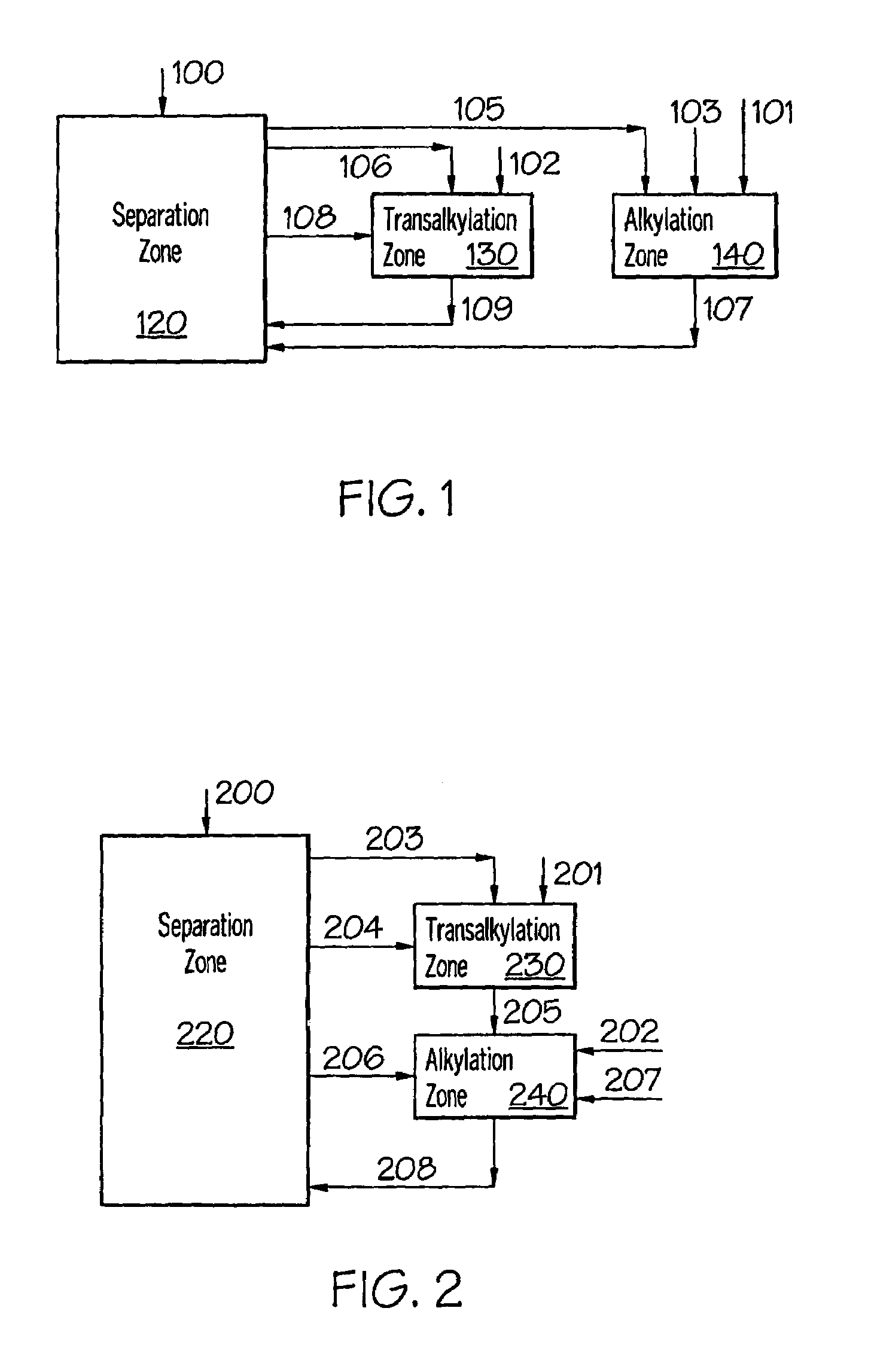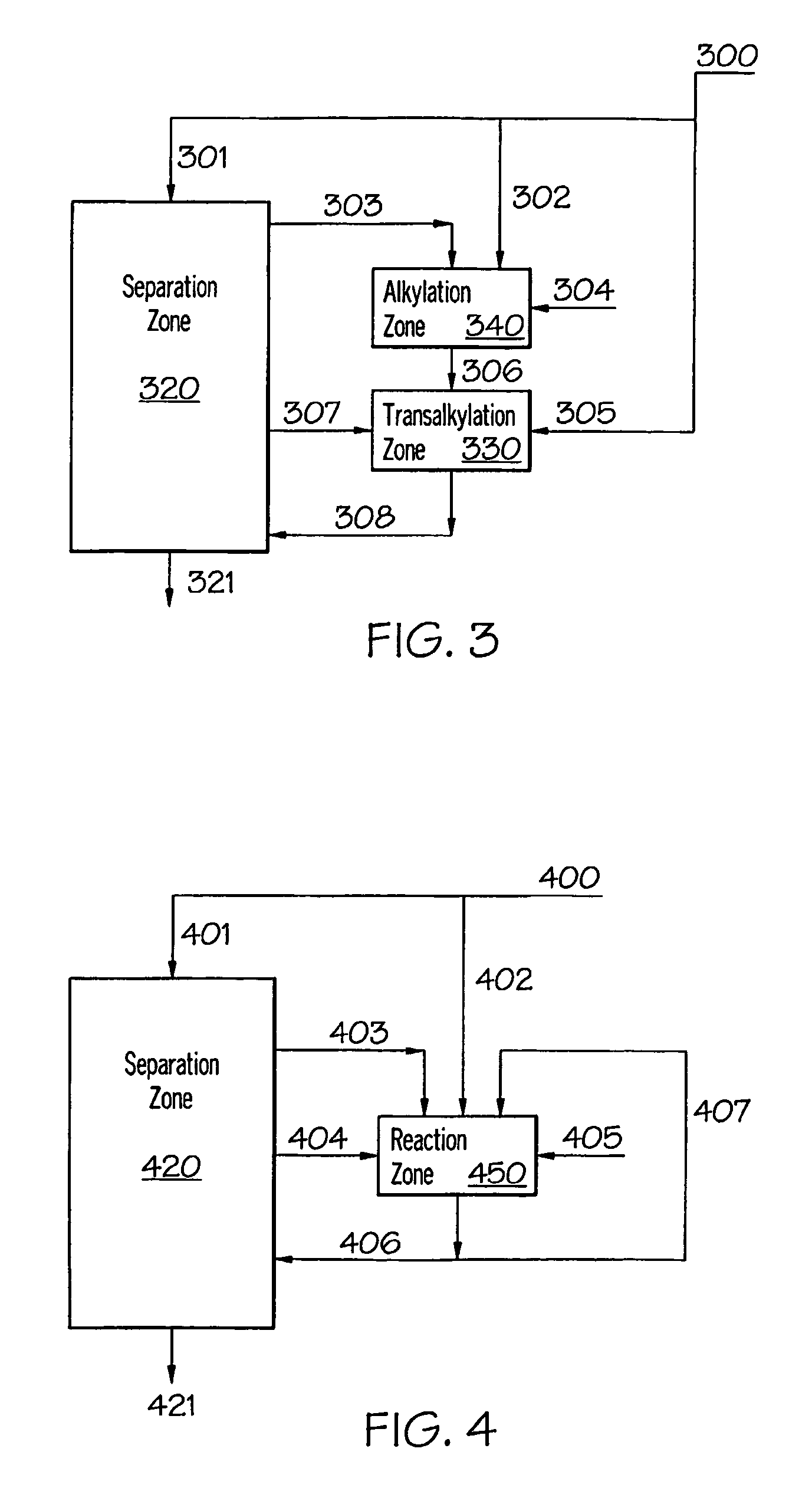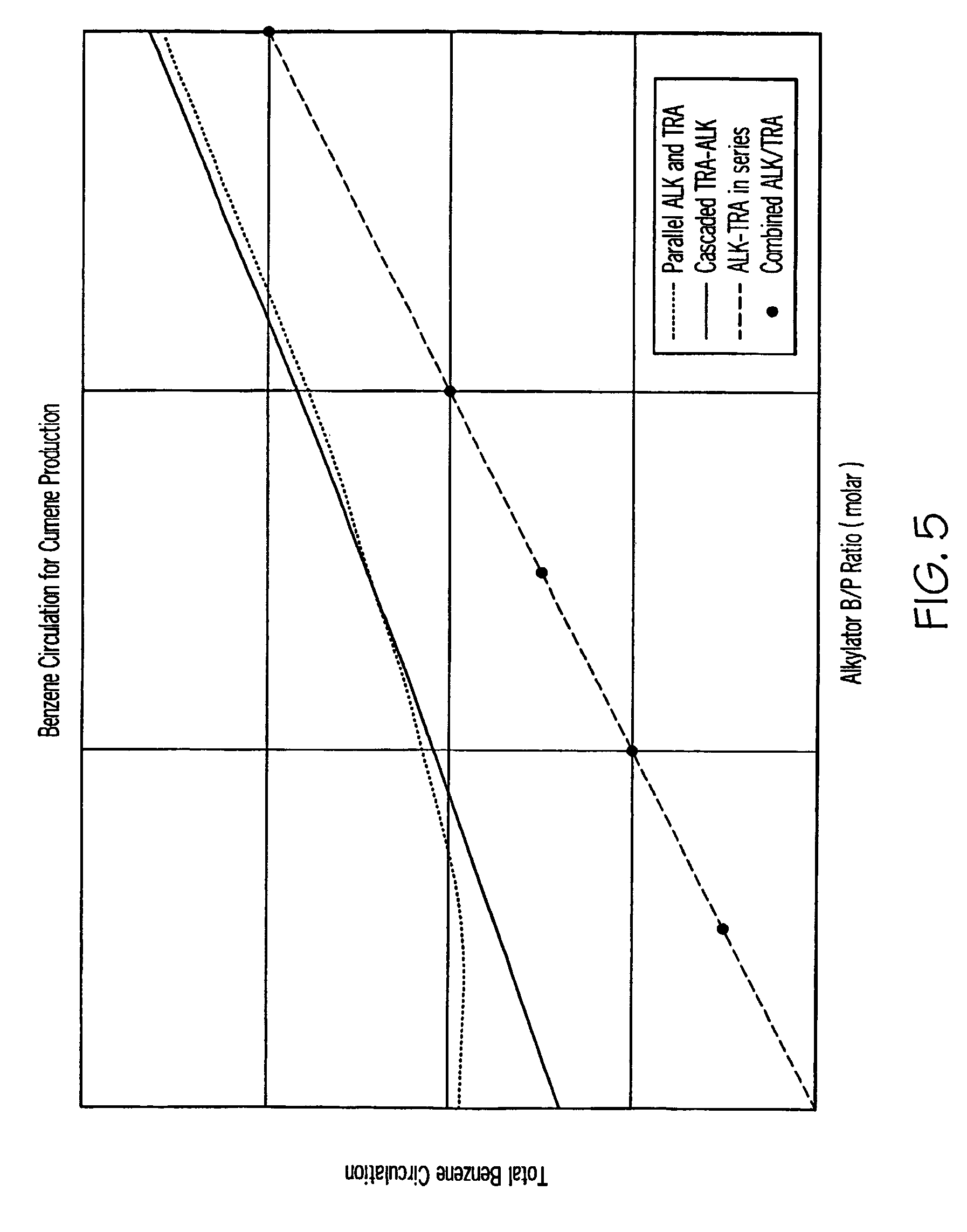Production of alkylaromatic compounds
a technology of alkylaromatic compounds and alkylaromatic compounds, which is applied in the field of cumene and cumene, can solve the problems of uneconomical competitive fuels, prohibitively expensive simply disposal, and unreacted aromatics consume very substantial amounts of energy, and achieve less total aromatic distillation, the effect of reducing capital and utility costs
- Summary
- Abstract
- Description
- Claims
- Application Information
AI Technical Summary
Benefits of technology
Problems solved by technology
Method used
Image
Examples
example 1
[0060]For production of cumene, computer simulations were carried out to determine the required total benzene circulation at different alkylator feed benzene to propylene molar ratios. The following four reactor configurations were considered: (1) the conventional parallel alkylator and transalkylator reactor configuration (FIG. 1); (2) the transalkylator-alkylator cascaded configuration provided in U.S. Pat. No. 5,902,917 (Collins) and U.S. Pat. No. 6,096,935 (Schulz) (FIG. 2); (3) the configuration of the first embodiment of this invention—alkylator and transalkylator in series configuration (FIG. 3); and, (4) the configuration of the second embodiment of this invention—combined alkylation / transalkylation zone (FIG. 4).
[0061]The weight ratio of benzene to polyisopropylbenzenes in the transalkylator feed in the first two reactor configurations considered above was 2. As shown in FIG. 5, the two reactor configurations provided in the present invention require significantly less benz...
example 2
[0062]An alkylation reactor and transalkylation reactor were configured in a series configuration in accordance with FIG. 3 of the present invention. An MCM-22 type catalyst provided by ExxonMobil Chemical Company (identified as MC-1124) was loaded into the alkylation reactor. The amount of the catalyst loaded in the rector was 60 grams. A feed comprising 30 grams per hour (0.71 moles / hr) of propylene and 110 grams per hour (1.41 moles / hr) of benzene was introduced into the alkylation reactor. The alkylation reactor inlet temperature was maintained at 262° F. (128° C.). The alkylation reactor outlet temperature was maintained at about 284° F. (140° C.) by recycling part of the alkylation reactor effluent back to the inlet of the alkylation reactor. The alkylation reactor pressure was maintained at about 370 psig (2551 kPAg).
[0063]Another MCM-22 type catalyst provided by ExxonMobil Chemical Company (identified as MC-1122) was loaded into the transalkylation reactor. The amount of the...
example 3
[0065]A combined alkylation-transalkylation reactor was configured in accordance with FIG. 4 of the present invention. An MCM-22 type catalyst provided by ExxonMobil Chemical Company (identified as MC-1571) was loaded into the combined reactor. The amount of the catalyst loaded in the combined rector was 60 grams. A feed comprising 30 grams per hour of propylene (0.71 moles / hr), 101 grams per hour of benzene (1.29 moles / hr), and 59 grams per hour of recycle diisopropylbenzenes was introduced into the combined reactor. The recycle diisopropyl-benzenes was of about 93% purity. The combined reactor inlet temperature was maintained at 365° F. (171° C.). The combined reactor outlet temperature was maintained at 361° F. (183° C.) by recycling part of the combined reactor effluent back to the combined reactor inlet. The combined reactor pressure was maintained at about 370 psig (2551 kPAg). A comparison of the combined reactor feed and effluent listed in TABLE 2 below indicates that the co...
PUM
| Property | Measurement | Unit |
|---|---|---|
| pressure | aaaaa | aaaaa |
| temperatures | aaaaa | aaaaa |
| pressures | aaaaa | aaaaa |
Abstract
Description
Claims
Application Information
 Login to View More
Login to View More - R&D
- Intellectual Property
- Life Sciences
- Materials
- Tech Scout
- Unparalleled Data Quality
- Higher Quality Content
- 60% Fewer Hallucinations
Browse by: Latest US Patents, China's latest patents, Technical Efficacy Thesaurus, Application Domain, Technology Topic, Popular Technical Reports.
© 2025 PatSnap. All rights reserved.Legal|Privacy policy|Modern Slavery Act Transparency Statement|Sitemap|About US| Contact US: help@patsnap.com



